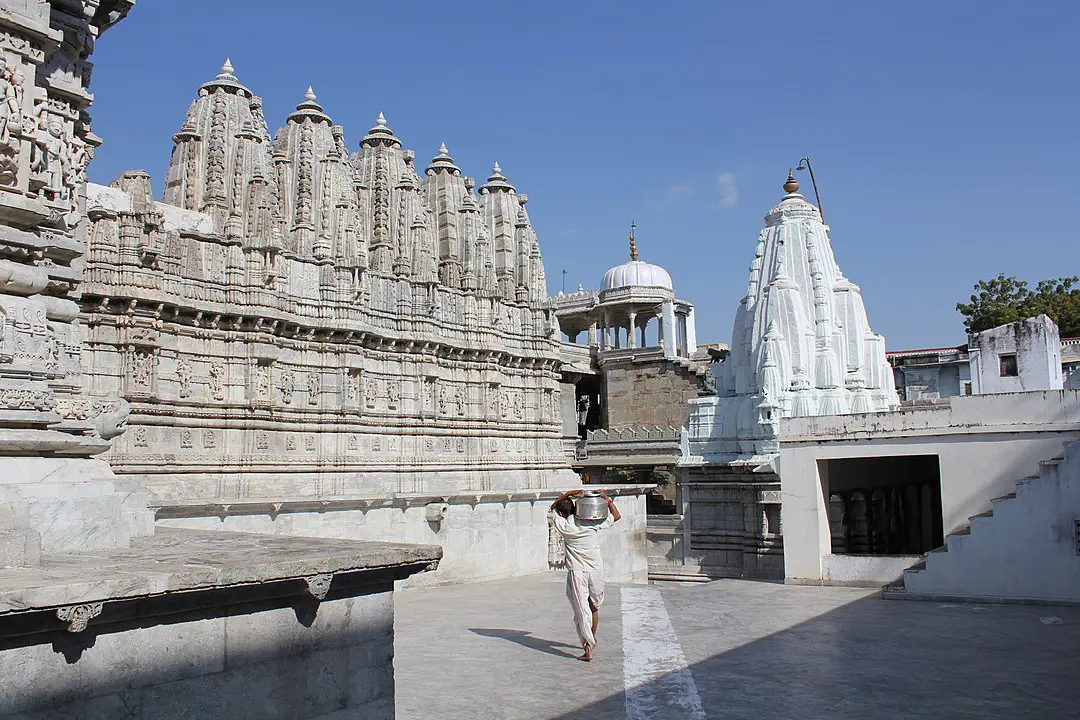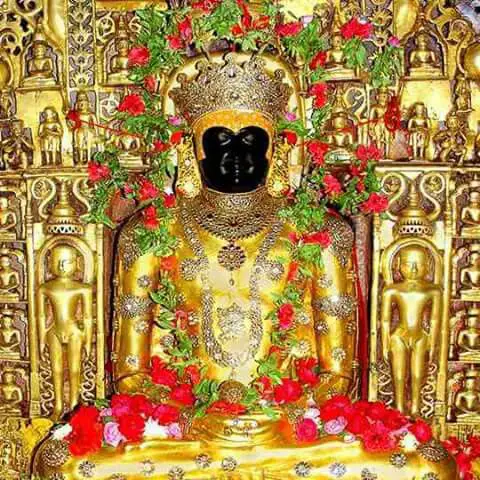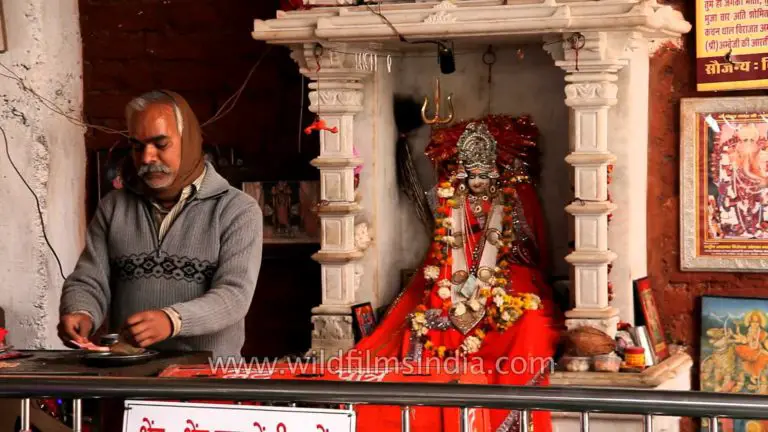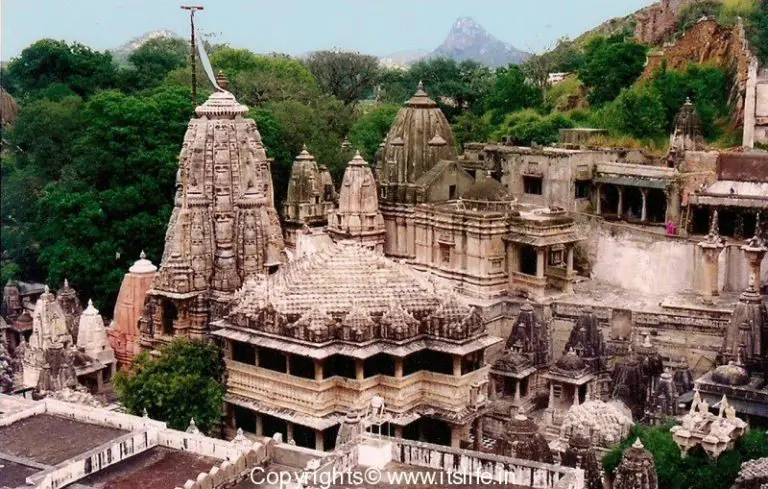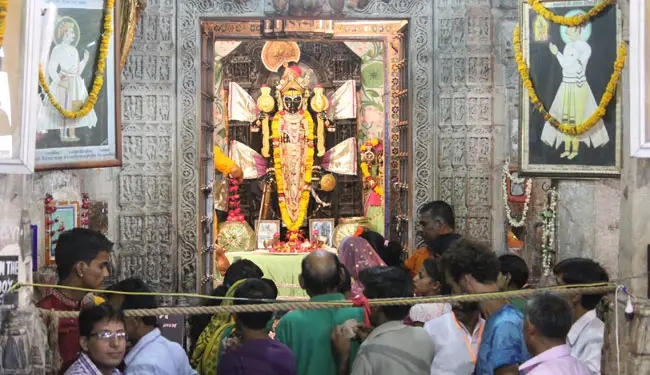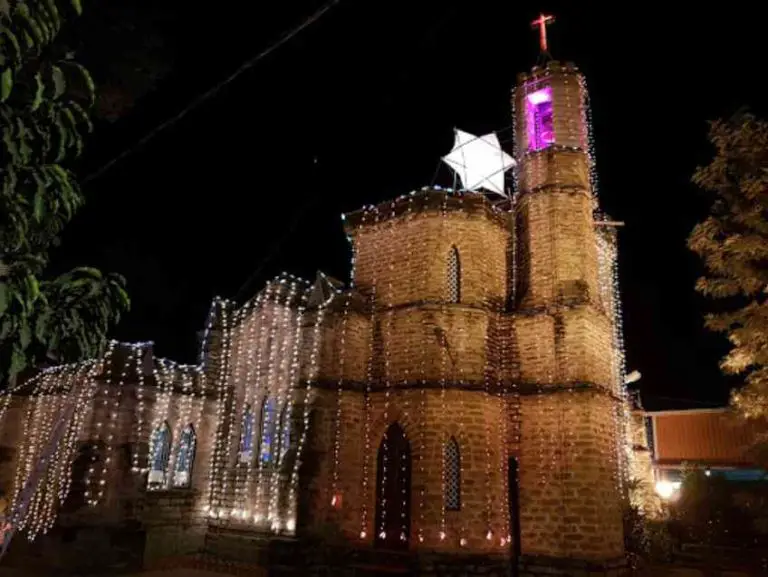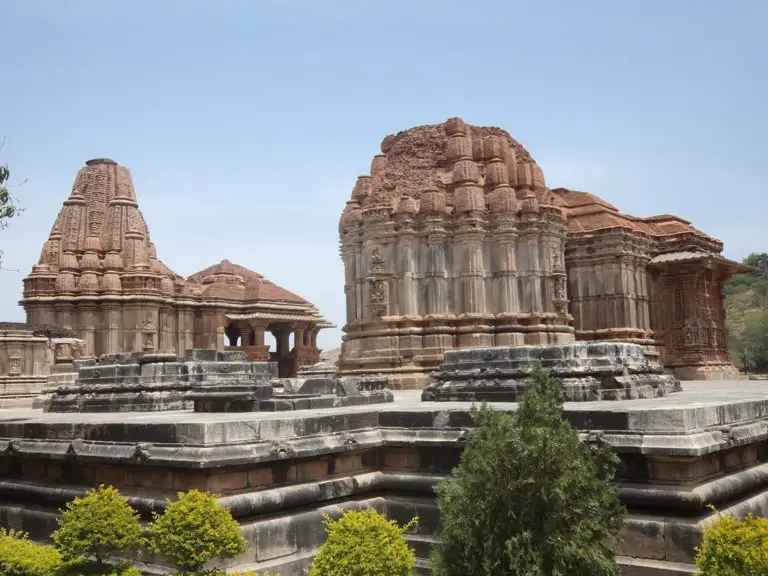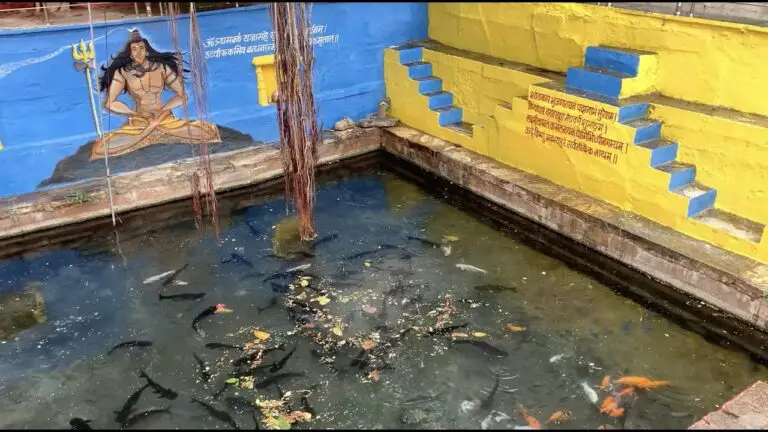Kesariyaji Rishabhdeo Temple
The Rishabhdeo temple is a vital pilgrimage site in Rajasthan placed in a small town named Dhulev on the Udaipur-Ahmedabad highway, 65 kilometers (40 miles) from the city of Udaipur. Due to the prestige that the temple holds, Dhulev is also popularly recognized by the name of Rishbhdeo or Rikhabdeo. Rishabhdeo temple is dedicated to lord Rishabh Deo and is extensively worshiped by the Jain, Meena tribal and Vaishnav communities. The diety is also esteemed by the name ‘Kesariyaji’ as the pilgrims offer enormous quantities of saffron (Kesar) as a gesture to showcase their devotion.
The temple building houses a 105 centimeters high black stone idol of lord Rishabhdeo in a cross-legged sitting posture also known as Padmasan; and due to its dark complexion, it is renowned by the name ‘Kalia Baba‘ in the local tribal public. In addition to the main idol, there are 23 other smaller idols made out of Ashtadhatu (an alloy composed of eight metals) encircling the main idol of lord Rishabhdeo out of which two are in standing and the other twenty-one are in sitting position. The temple traces back its origin long back into the 15th century and was considered to be one of the four chief religious institutions of Mewar which were ruled by the Sisodiya Maharanas back then.
Contents
Kesariyaji Rishabhdeo Temple
Temple Building
- The Rishabhdev temple is architecturally very sound and is notably quite distinctive from the other usual temple buildings. The most distinguishing feature of this temple is its fifty-two spires which, according to the Jains, are inspired by the fifty-two temples of Nandishwar Dweep which is a hypothetical holy island in Jainism.
- The temple campus consists of several pillars, doors, arches, walls, and pinnacles which are all embellished by sumptuous artistic carvings of Digambar idols and Gods. There are 1100 pillars in the temple and each of them is uniquely decorated from the rest, i.e., none of the 1100 pillars are identical.
Statues and Idols in the Temple
- The main 105 centimeters high black-colored idol of lord Rishabh Dev in Padmasan position is a representation of his deep meditative state and mindfulness. The very statue has no sign on its base which clues the fact that it dates long back in ancient history. It is also believed that this idol was reverenced by Acharya Vidyanand in the 9th century.
- At the back of the diety, there are 23 idols (2 standing and 21 in sitting position) crafted in an alloy of eight metals called ‘Ashtadhatu’, which encircles the prime statue conveying the message of practicing solidarity to attain freedom from affection and aversion.
- Two oxen are carved at the center of the platform where the idol is placed. In addition to that, sixteen dreams visited by the mother of Rishabh Dev is also carved beautifully on the same platform.
- On the north and south of the ‘Khela Mandapa‘ of this temple, alluring statues of the ‘Panch Balyati‘(Bhagwan Vasupoojya, Neminath, Mallinath, Parshvanath and Mahaveer Swami) are placed which are worth a watch.
Religious Significance of the Temple
- According to the Bhagwat Purana, Rishabh Dev was the son of Nabhi and Meru. He was the father of a hundred sons, the eldest of which was Bharata.
- After passing on his kingdom to his son, he turned towards asceticism and started living like a monk meditating for long in extremely severe conditions; he soon became skeleton thin.
- This skeleton bodied ascetic turned out to be the founder of Jain faith and is widely known as the first Tirthankara of the Jains.
- Devotees visit the temple every year in large numbers, begging for his grace which is said to do actual wonders.
The History and Dispute of the Rishabhdeo Temple
- The actual history of the temple is quite uncertain as different communities have their different legends about the miraculous idol of Lord Rishabh Dev.
- Some say that it was discovered by a tribal man at a spot where a self-milking cow used to pour its milk. While a contradictory belief says that it was worshiped by Ravan in Lanka during the period of Lord Munisuvrat Swami and was taken to Ayodhya by Lord Ram from where it was taken to Ujjain and then it appeared miraculously in the town of Dhulev.
- But apart from the differences, all the existing stories talk about one thing undisputedly which is the sudden mystical appearance of the idol.
- As per the inscriptions obtained from the premises, the temple was renovated in the 14th and 15th centuries. Moreover, the inscriptions which were found below the idol of Marudevi Mata sates that it was installed in the 16th century.
- When the Sisodiya Maharanas of Mewar shifted their capital to Udaipur after they had to leave Chittor, their revival was made possible by the Jain ministers like Bhamashah who provided funds to reestablish the kingdom. Due to this significant Jain influence, the Maharanas became devotees of Lord Rishabh Dev and started worshipping in the temple. Hence, the temple was in direct control of the Sisodiya Maharanas before independence.
- But the disputes arose when the rule of Maharanas came to an end and several different devoted communities, namely the Shwetambars, Digambars and other Hindu groups came forward to claim the administration of the temple.
- All the respective parties came up with their own set of documentation and pieces of evidence to prove their claim over the temple and after considering all the materials produces, The Supreme Court of India came to its judgment in 1974 and identified the temple as a Shwetambar Jain temple.
- However, since the managerial rights of the temple were taken over by the State of Mewar before the proclamation of the Indian Constitution, therefore, Jains had no right to manage the temple after the Constitution came into existence.
- This once again gave rise to disputes between Shwetambars, Digambars, Hindus and the State of Rajasthan and after a Supreme Court judgment of 2007, the Jain community was handed over the administrative rights to the temple.
How to Reach Rishabhdeo from Udaipur
The Rishabhdeo Temple is 69 kilometers from Udaipur by road and there are two ways to reach there:
- Bus: You can book a seat in a local bus service which would cost you almost an hour and a half to reach there.
- Car / Cab: The better option would be to take a cab or a personal car as it would consume lesser travel time and gives you flexibility.
If you liked reading about the Rishabhdeo temple, please share your views below in the comment section.

